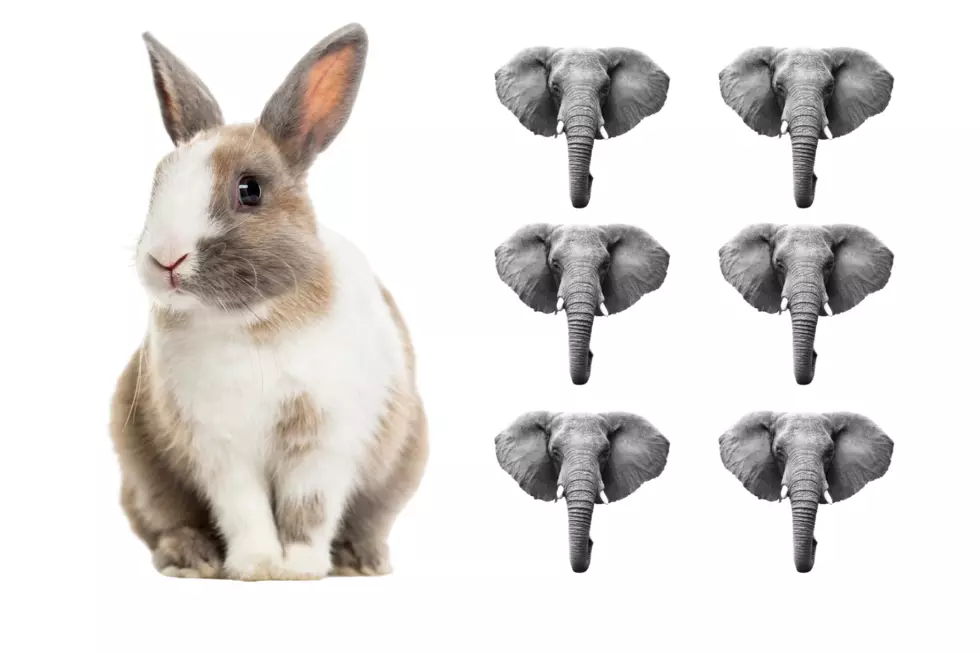
Ryan’s Theory on Why the Viral 1 Rabbit 6 Elephants Math Problem Has More Than One Answer
Thousands of people have tried on social media, and many have failed. No, I'm not talking about coming up with a convincing argument to how Carole Baskins didn't kill her first husband, I'm talking about that tricky math problem about a rabbit, some elephants, a couple monkeys, and their parrots.
The question goes like this:
Based on the answers I've seen people give, the first instinct is to assume all the animals are going to the river, and that each individual elephant saw two monkeys each leading the math to look like this in their minds:
1 + 6 + 12 + 12 = 31
That breaks down to the 1 rabbit, the 6 elephants, 12 monkeys (assuming each elephant saw 2 monkeys independently), and 12 parrots (1 for each of the 12 monkeys). But, remember the title of the question is "The Battle of English and Mathematics." The "English" part is what's getting forgotten.
At first I thought the answer was 5, and here's why:
Remember, the answer we're looking for is how many animals are going to the river. When you carefully re-read the set up, it doesn't say the elephants were going to the river. At this point only the rabbit is. He just happened to see the elephants on his way.
The second part says every elephant saw two monkeys. Not each elephant which is how our brains wanted to interpret it. Therefore, we need to infer that all six elephants saw the same two monkeys, leaving us with the rabbit and the two monkeys going to the river putting us at three so far.
Still with me?
Finally the last statement says every monkey holds one parrot in their hands. Based off the fact we've determined there's only two monkeys, we come to the conclusion there are only two parrots, so we get this formula:
1 + 2 + 2 = 5
I was convinced I had it all figured out. I cracked the code! I am the smartest man alive! I even found two separate websites that supported my answer (this one and this one).
But then, as I typically do with pretty much everything, I started to overthink it, and my mind started poking holes in my theory, leading me to think the answer is 4.
Hear me out. If we are to infer that all six elephants saw the same two monkeys based off the word "every" in the second sentence, then we can't infer that each monkey is holding a parrot based off the word "every" in the last sentence. If it said "each monkey," then you have a convincing argument for two parrots, but it doesn't say that. It also says the monkeys are holding one parrot in "their" hands. So, shouldn't we instead infer that both monkeys are each using both their hands to hold one parrot? In that case, we'd have one rabbit, two monkeys, and one parrot, for a total of 4.
If we want to go even deeper, you could say there are four parrots. The word, "hands" is plural in the last sentence, so you could argue that each monkey is carrying a parrot in each of their two hands making it a total of 7 animals going to the river. One rabbit, two monkeys, and four parrots.
Welcome to the nightmare that is my mind.
Now one answer I've seen that I don't agree with is 3. The theory behind that answer is that parrots are birds, not animals which is not true. Birds aren't mammals, but since they don't create food through photosynthesis like plants, they are considered animals. Nice try, but no dice.
What do you think the answer is? Or do you think there even is a right answer? Let me know in the comments below.





